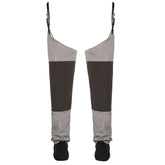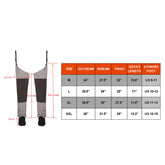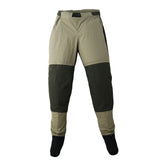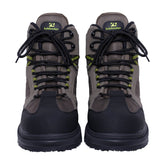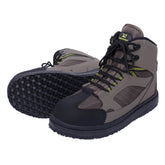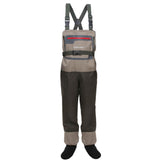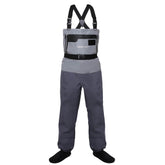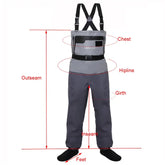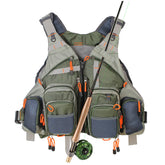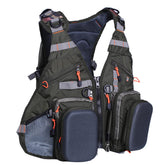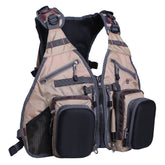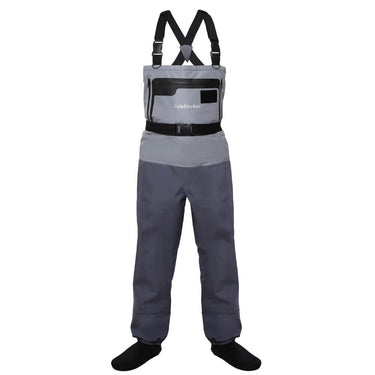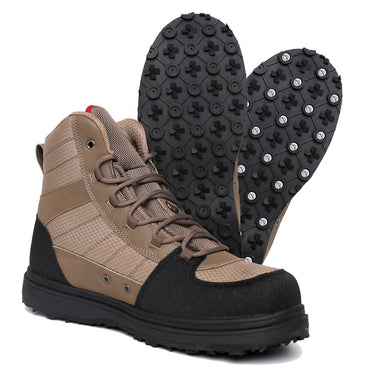The Best Leech Patterns For Trout And Great Fishing
It’s widely known that anglers have been using leeches for decades to catch trout. Unfortunately, if you are like me, you are afraid of holding these parasites in your hands. Due to my aversion to them, I had to choose between using dry flies or live bait. I had to follow my granddad, who is an avid fly fisherman, whenever he taught me something new.
A leech pattern is an effective technique for catching trout. It resembles live bait, and some leech patterns can attract a wide range of fish, such as salmon and trout.
The right technique for using the right leech pattern is very important when it comes to fishing for trout. In this article, I will show you my favorite and most effective leech patterns for fishing for trout. We’ll also talk about why you should try this technique, as well as how long it’s been used by anglers.

WHAT ARE LEECHES, AND WHY DO FISHES LOVE THEM?
In this article, I will show you my favorite and most effective leech patterns for fishing for trout. Before I talk about why I have been using these patterns for years, I will talk about what leeches are and how they are loved by fish. I will also show you why they can catch fish even when fishing at different times of the day.
What Is A Leech?
Like its close relative, the earthworm, the Leech is a uniquely segmented worm that has a muscular and soft body that can contract and elongate. Unlike the other types of hermaphrodites, it has suckers on both ends of its body. Also, its ring doesn't correspond to its internal segments.

Where Are They Found?
Although Leeches can be found in freshwater habitats, they prefer to hide in soft-bottomed areas, such as streams, lakes, and ponds. They attach themselves to logs, stones, and vegetation, and these parasites have been known to draw blood from injured individuals in the past.
Most common types of leeches, such as the Hirudo medicinalis, are known to attach themselves to their hosts using their suckers. They also release a peptide known to prevent blood from clotting, which makes them able to suck blood.
Unfortunately, most fly anglers are not allowed to go near leeches. However, there are other species that do not consume blood. Some of these parasites, such as the Erpobdelliformes, have large toothless mouths that they use to consume other worms and larvae.
Why Is Avoiding Leech Patterns A Bad Idea?
Don't try to avoid leech patterns just because you believe that they are bloodsuckers. In fact, several kinds of fish, such as sturgeon, largemouth bass, and catfish, consume leeches. You can never go wrong with these patterns, and the right technique can attract several large fish species.
Why Are Leeches Ideal For Fishing?
These parasites can survive extremely cold temperatures. They can also be found in streams and lakes during winter.
The trout and other fish species often turn to leeches for food during times of hard times, such as winter. Some experts believe that a low population of fish can be found in streams and lakes with high concentrations of these parasites.
Since most Leeches die after laying their eggs, most of them will only provide you with one bait per year. Also, with a high population, a leech pattern can be very surprising.
Besides being nutritious, the Leech is also known to affect the ecosystem through its reproduction. This is because they are bloodsuckers that leave their hosts to lay their eggs.
One important thing to keep in mind is that Leeches are nocturnal creatures, which means they can hide whenever it's bright. Using a leech pattern can be effective when you're fishing at dusk or dawn.
WHAT ARE THE BEST LEECH PATTERNS FOR TROUT?
Trout prefer to eat leeches due to how abundant their population is in most streams, and they can easily mistake your technique for a live one. Unfortunately, not every pattern can be successful, so you need to create one that resembles the species that they consume.
The pattern should also resemble the life stages of the leeches in the water. Knowing the breeding patterns of these parasites can be beneficial. Some patterns resemble consuming an egg.
1. Bunny Hair Leech
One of the best patterns that you can use if you are not a Leech fisherman is the marabou leech. This is because its segmented body makes it incredibly effective for various types of fish, such as bass, pike, and carp.
The choice of the color of the leeches used in the pattern can also vary. Most people prefer to use black instead of the usual white. To create a successful rabbit hair Leech, you need to create a combination of lead wire, a hook, and marabou feather. One of the most important factors that you should consider is the quality of the marabou feather.
The type of feather you use will also affect the way the fly will behave when it's submerged.
The lead wire tied to the hook using a secure vise can also give the fly a slightly ribbed appearance.
To create a successful rabbit hair Leech, you need to create a combination of lead wire, a hook, and marabou feather. After securing the tail, you can twist the remaining feather around the hook's shank to create the creature's body.
Make sure to leave enough space between the head and the body for the marabou feather. Finally, cut the feather near the body.
Don't forget to counter-wrap the wire around the marabou feather. You should also cut the wires at the same time.
This durable leech pattern can be used to access the local still water and catch fish.
2. Woolly Bugger
One of the most dependable segmented leech patterns that you can use if you are a freshwater or saltwater fisherman is the woolly bugger. This is a popular choice among both freshwater and saltwater anglers. It can be used in tidal flats, streams, and rivers.

This versatile leech pattern can also be used to imitate a wide range of live baits, such as crabs, leeches, and baitfish. It has been surprising for many anglers to use this type of pattern.
The woolly Bugger can be tied using a marabou feather or a chenille body. You can also use a palmered hackle to attach to the tail of the fly. Copper wire can help protect the hackled palmer and give it durability and stability.
Adding lead or tungsten wires to the body of the fly can increase its weight. This is a popular choice when using this type of pattern in shallow streams and rivers. You can also use different colors, such as brown, black, or olive, for better results when fishing in freshwater lakes. The brighter the colors, the better when dealing with fish in saltwater areas.
This type of leech pattern can be tied using hooks number 2 to 14. The main variation of this pattern is the addition of brass or tungsten beads, dumbbell eyes, and tungsten or brass cones.
3. Egg Sucking Leech
Although we have already talked about the various types of leech patterns that are commonly used by anglers, we are about to introduce a new one. This is a unique pattern that resembles a consuming fish egg. Since males are usually the ones guarding the eggs, this is the best technique for spring fishing. It can also attract a wide range of fish.

The egg-sucking leech was first used for fishing in streams and rivers before it was widely introduced in the U.S. This type of pattern caught plenty of fish during its early trials.
The head of an egg-sucking leech is covered in a bead, resembling an egg. The body of this creature is usually dark, resembling a leech. It can also be black or purple, and its tip is orange or bright red.
The egg-sucking leech can be used to catch a wide range of fish, such as pike, salmon, bass, and trout.
4. Slumpbuster
Award-winning dry fly maker John Burr is known for his innovative designs that have made fishing easier and more effective. One of his most popular patterns is the slumpbuster. This is a unique design that features a flash, a weight, and a design that allows it to displace a lot of water. It can also be used to attract trout. To learn how to tie this pattern, follow the following steps.

After you have inserted the hook into the cone head, move it to the center of the hook eye and secure it on your line.
The weight of the slumpbuster is required to sink properly. To make sure that the hook is secure, you can first wrap a copper wire around its shank.
Make sure that the wire wraps around the cone head. This will help secure the structure.
Begin by knotting the thread on the shank, moving backward and forth from the wire's end. Then, snipping one end, wrap around the wire.
For the rib, you can use a brassie size wire, which will be tied to the bend using the thread. You can also add a sparkle braid over it.
The remaining length of the braid can also be used to secure the hook. This will be done by wrapping it around the cone head.
The last component that you will need is an anchor stripe, which will be pushed into the cone head. Start by securing the part of the stripe around the head.
To ensure that the fur is at a 90-degree angle to the hook, trim it. Then, secure it at the bend of the hook using the wire.
Before securing the strip, take out a strip of fur from the tip. Using your thread, secure it behind the cone head.
This pattern is commonly used for catching large fish in discolored water. It can also be tied using different colors. Moreover, it's one of the best flies for targeting big fish in these types of waters.
4. THE KGB LEECH FLY PATTERN
Although there are many different types of leech patterns that can be used to attract fish, have you ever considered trying a less common technique called the KGB fly? Despite its relatively low popularity, this fly has been proven and tested by several skilled anglers.
To tie the KGB leech pattern, you should do the following:
Before you start tying the KGB pattern, make sure that you have your favorite bead on the hook. This will serve as the head of the leech while adding some weight to it.
Wrap a thread behind the bead to the hook’s bend, ensuring it’s secured.
Prepare and secure your tail at the bend of the hook using the strands of the flash. The flash should then stretch past the bead.
After securing the tail using the flash, wind it around the bead using the wire. This will allow you to create a durable and attractive leech pattern.
Bunny Leech
Besides being a unique design, the rabbit leech is also one of the easiest to tie. All you need to do is a hook, some strings, and rabbit fur. Although it can be challenging for newcomers, practicing the technique will allow you to make your flies easily.
One of the most dependable fly patterns that you can use is the bunny leech. Unlike other patterns, this one requires fewer materials to be tied. Also, you can create the tail and head using the same material. This fly can be used to attract a wide range of fish species, such as bass, salmon, and trout.
Although you can use a combination of colors or one of the many types of threads to create the leech pattern, it's important to make sure that the material used is appropriate for the job. Before you start tying the pattern, make sure that the hook is supported by a zonka strip.
After the tail is secured, you can start creating the body of the fly using the same material. Just tie a strip of rabbit fur to the end of the tail using your thread, and then wrap it around the hook. You can also add beads to the body for added weight.
5. Bipolar Balanced Leech Pattern
One of the most dependable and versatile leech patterns that you can use for fly fishing is the bipolar balanced one. This fly can be used for a wide range of fish species. Due to its versatility, this pattern can be used as a normal or balanced leech.
To tie it, you should do the following:
After securing the bead on the line, start by inserting it into the hook.
To create the tail, cut a strip of marabou fiber and secure it onto the hook using your thread. Continue to tie the material until it's secure around the bend of the hook.
To secure the body of the leech, use your thread to secure a bright-colored wire around its body. Wrap the wire around the creature's body to ensure that you have enough wraps.
To create the head, secure the polar chenille around the body of the pattern. Before wrapping it around the bead, trim the excess. You can also snip the wire from the head using a snipper.
The fibers of the leech should be stretched backward in order to create the desired design. After dipping the material in warm water, it will retain its unique shape and will keep its appearance for a long time.
6. Simi Seal Leech
Some of my friends have always claimed that the bipolar balanced leech was one of their favorite patterns to use when casting for fish. At the time, I didn't think that there was a need for me to add more patterns to my collection.
During the COVID-19 pandemic, my free time was spent experimenting with various things, such as making a simi-seal leech for fishing. After I asked my friend to send me some of his patterns, I was surprised by how well the one he made worked.
However, after watching several videos on YouTube showing how to tie the bipolar balanced leech, I decided to try it. Through the lessons I learned from the internet, I was able to create a variety of color combinations. After settling on a combination of white, brown, black, and tan, I was able to create a pattern that resembled some of the leech species commonly found in rivers and lakes.
To tie this unique pattern, you should do the following:
After securing the bead onto the hook, start by adding a bead to it. Depending on the type of fish you're targeting and the season, you can create a pattern that resembles a fish consuming egg or a bead at the center for added weight.
To secure the bead, secure it using your thread. Then, continue wrapping the hook's shank around the bend.
The pattern for this project is made using a simi seal, and you should also create the tail using this material.
After securing the tail, apply some adhesive to the leech's body and then wrap more fiber around it to create a more impressive creature. You can also tapper the fly's body, and once you have the desired one, you can start tying it using your thread.
WHY SHOULD I USE A LEECH PATTERN?
Aside from being found in various water bodies, leeches can also be found hiding under rocks and vegetation. They're nutritious, which means that they can provide all the trout with the necessary food to survive. Because of this, they often become the fish's preferred food source when they encounter other issues.
One of the main reasons why you should choose to use a leech pattern is that it can attract a wide range of fish species. This means that you're likely to land a variety of fish after casting a pattern for them.
Leech patterns are relatively easy to make and are often cheaper than dry fly patterns. Some experienced fly anglers claim that it only takes them around two minutes to create these patterns.
ONE MORE CAST WITH A LEECH
One of the most enjoyable aspects of fly fishing is the ability to relax and forget about my busy schedule. Since most of the fish in our waters are fed on by leeches, it's no wonder they're one of the most popular patterns I make. If you're planning on trying out this technique, why not try out these patterns and catch as many different species as possible?
Article refer:
1.Choosing the Best Fly Fishing Flies
2.Fly Fishing with Ant Patterns (Setup, Flies and More)
3.Complete Guide to Fly Fishing with the Elk Hair Caddis
4.Complete Guide to Fly Fishing with the Beaded Caddis Nymph
5.Fly Fish for Bass with Poppers
6.Complete Guide to Fly Fishing with the Zebra Midge (Simple to Tie)
7.Complete Guide to Fishing and Tying the Griffith's Gnat
8.15 Best Flies for Cutthroat Trout (These Flies Work!)
9.Aquatic Fly Fishing Insects
10.Fly Fishing Starter Flies
